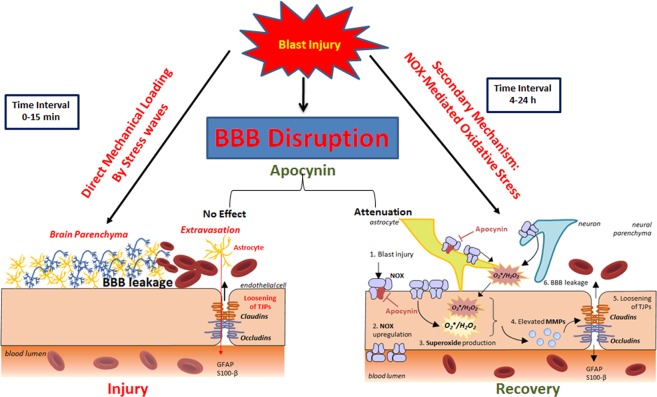Figure 8.
Schematic illustrating the primary and secondary events that contribute to BBB permeability changes following blast TBI. The left panel represents the primary damage caused by direct mechanical loading by stress wave rupturing the vasculature immediately (t0–t15 min) following blast without any biochemical events. The right panel represents secondary biochemical mechanisms such as oxidative stress that are activated by blast, exacerbate the primary mechanical injury to vasculature. Oxidative stress derived by the upregulation of NOX on neurovascular endothelial cells (and other neural cells) cause increased superoxide production both within and outside the endothelial cells. This superoxide elevates MMP production, which breaks down the tight junction complexes connecting adjacent endothelial cells, causing increased permeability of the BBB. Use of apocynin prevents the translocation of the NOX p47 phox subunit, thereby preventing the increase in superoxide production in the later stages of BBB permeability but not immediately after blast.

